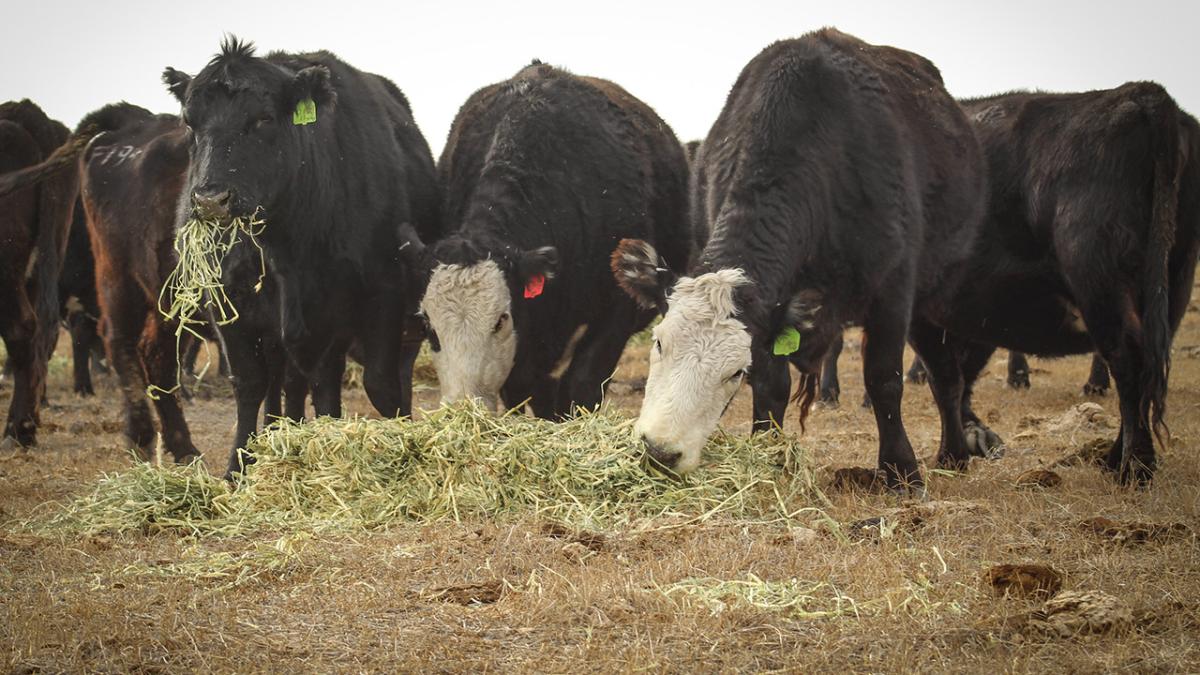Real Ag Stock
Replacing females in the beef cow herd plays a pivotal role in a sustainable and profitable cow-calf operation. Analyzing the cost of raising replacements versus purchasing them can help make informed decisions. If retaining replacements, cattle producers must consider both the costs and potential returns associated with raising and integrating these heifers into the breeding herd. Here are some key financial considerations:
Operational Goals and Risks
Consider the operation's long-term goals and breeding objectives. Retaining heifers aligning with these goals may yield greater returns over time. Unforeseen challenges such as adverse weather conditions, disease outbreaks, or market fluctuations can impact the financial success of retaining heifer calves. Implementing risk management strategies is essential to mitigate potential losses.
Market Dynamics
Current markets are providing the cow-calf operator a chance to sell heifer calves or bred heifers for premium prices at a time that costs are at record or near-record highs. Consider current market conditions, but also the potential future market value of replacement heifers. Prices can fluctuate based on supply and demand, as well as broader economic factors. When deciding to sell or retain heifers, producers may be influenced not only by market conditions and herd goals, but also the financial situation of their operation.
Return on Investment
Heifers that calve consistently and raise healthy calves contribute positively to the overall financial success of the breeding program. While initial costs may be significant, consider the long-term value of these heifers as productive members of the cow herd. Well-managed replacement heifers can contribute to the overall profitability of the operation. Assessing market trends and adjusting the replacement strategy based on future predictions can enhance an operation’s economic viability.
Costs
Raising replacement heifers will include costs tied to labor, feed, healthcare, and facilities. The time and labor required for heifer management, including feeding, monitoring health, and handling, contribute to overall expenses. Raising heifer calves involves providing appropriate nutrition for growth and development. Feed costs can include grazing expenses, supplemental feed, and winter feeding. Ensuring heifers reach puberty and are capable of successful breeding involves careful monitoring and potential interventions, adding to the overall cost. Veterinary and preventative care contribute to the overall cost of raising heifers. Adequate facilities for heifer development, including pens, shelters, and handling equipment, incur initial and ongoing expenses.
Preparing heifers for breeding involves additional costs, such as synchronization programs, artificial insemination (AI) expenses, and potential breeding soundness exams for bulls.
Replacement Heifer Selection and Genetics
The decision to retain heifer calves involves selecting those with desirable genetic traits. Purchasing high-quality bulls or using AI sires may incur additional costs but can contribute to improved genetics in the herd. Prioritize replacements that possess desirable traits that meet the goals of the operation. Factors such as birthdate, phenotype, and overall health should also be evaluated when deciding which females to retain. Evaluating the existing cow herd and culling underperforming individuals may incur some costs but is essential for maintaining herd quality.
In conclusion, the financial implications of retaining heifers as future cow herd replacements involve a careful analysis of costs, potential returns, and market dynamics. Cattle producers should weigh these factors against their operational goals and risk tolerance to make informed decisions that contribute to the overall sustainability and success of their breeding programs.


